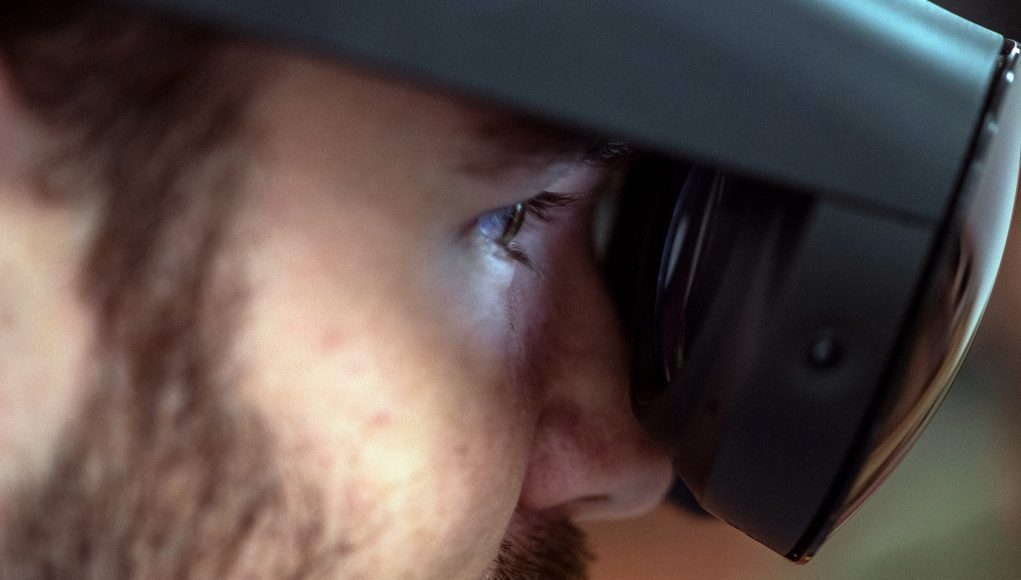There’s a lot to talk about after our time with Quest Pro. In our prior article we talked about the experience using Meta’s new MR headset. Here we’ll get into the nitty gritty of the headset’s capabilities and performance.
Update (October 25th, 2022): Quest Pro releases today—our review unit arrived quite late and we’re still in the process of giving it a full evaluation. In the meantime we’re revisiting our initial impressions of the headset from earlier this month. Stay tuned for our full Quest Pro review.
As often happens with hands-on demos, I wasn’t able to sit down and really test everything I would have liked to about headset (on account of being walked through several demos in row), but I soaked up as much as I could about how it looked and felt to use the Quest Pro.
Key Quest Pro Coverage:
Quest Pro Revealed – Full Specs, Price, & Release Date
Quest Pro Hands-on – The Dawn of the Mixed Reality Headset Era
Touch Pro Controllers Revealed – Also Compatible with Quest 2
One of my biggest surprises about the headset is that the resolving power isn’t actually much better than Quest 2. That made sense once Meta revealed that Quest Pro shares nearly the same resolution as Quest 2. Granted, the company claims the lenses have greater clarity at the center and periphery, but in any case it isn’t the kind of leap that’s going to make the headset great for reading or using it like a computer monitor.
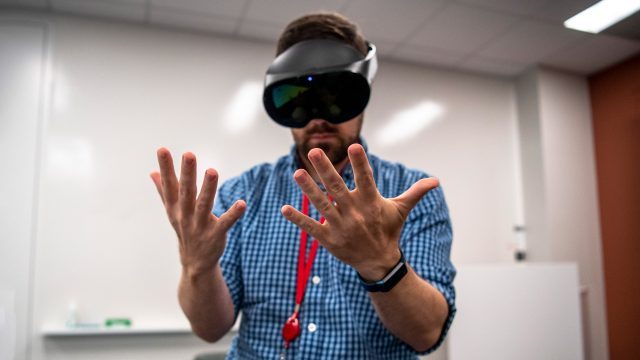
I take it this decision might have been related to the resolution of the passthrough cameras (not to mention the extra processing power required to drive the headset’s 10 on-board cameras). After all, if you had a super high resolution display but lower resolution cameras, the outside world would look blurry by contrast against the sharper virtual objects.
Speaking of passthrough… while Quest Pro finally gets a full-color view, it’s not quite perfect. Because of all the adjustments the headset is doing to render a geometrically correct passthrough view, the implementation ends up with a few artifacts that manifest as color fringing around certain objects—like a faint outline of missing color.
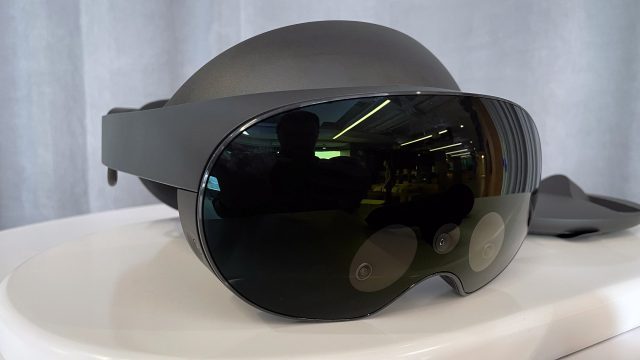
My best guess is this happens because a mono RGB camera is employed for color information which is then projected over top of a stereo view… necessarily there’s some small angles where the color information is simply not present. This didn’t defeat the purpose of passthrough AR by any means (nor the appreciation for finally seeing in color), but it was something that would be nice to see fixed in future headsets.
As for the lenses, there’s no doubt that they’ve managed to compact the optical stack while retaining essentially the same kind performance as Quest 2… or potentially better; Meta says Quest Pro has up to 75% better contrast and a 30% larger color gamut thanks to 500 local dimming elements in the backlight, though I haven’t gotten to put this to test just yet.

Similarly, the remove of Fresnel lenses should eliminate glare and god rays in theory, but I wasn’t able to pull up the right content to see if they’ve been replaced with order kinds of artifacts. One thing I did notice though is that the lenses can reflect ambient light if angled toward direct light sources… luckily the headset comes with peripheral blinders if you want to cut this down and be more immersed.
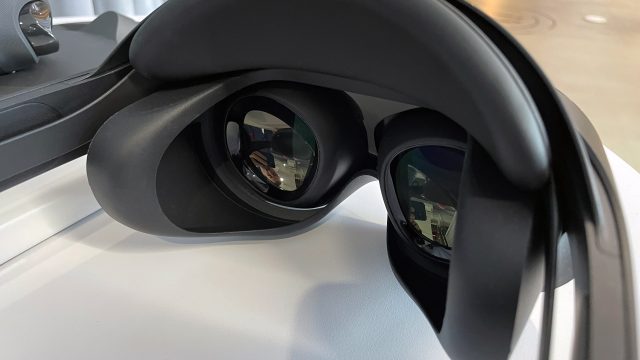
Quest Pro isn’t just a big upgrade to the headset; the accompanying Touch Pro controllers have some interesting capabilities that I didn’t expect.
With essentially the same handle as before, they still feel great in the hand, maybe even better than my favorite Touch controller (the original Touch v1) thanks to a closer center of gravity and a nice weight from an on-board rechargeable battery and improved haptic engines.
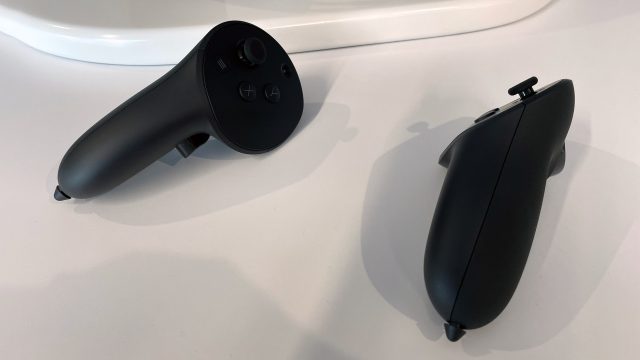
The single biggest improvement to the controllers is surely the addition of on-board inside-out tracking. Not only does this remove the ring to make the controllers more compact and less likely to bump into each other, but now they can track anywhere around you, rather than going haywire if they leave sight of the headset’s cameras for too long. It’s early to say (and Meta has made no mention of it) but this could even open up the controllers to functioning like extra body trackers.
I didn’t get to put the controller tracking to the test with something demanding like Beat Saber, but until I can, I’m hoping Meta was smart enough to make sure these could hold up to the Quest platform’s most popular game.
The new capabilities on the Touch Pro controller are hit or miss for me so far.
First is the pinch sensor that allows you to push down on the thumb rest to register an input. Combined with squeezing the index finger, this creates a pretty natural pinch gesture. It feels a little novel, but I could see this being used as an easy way to emulate pinch inputs in hand-tracking apps without any need for the developers to make changes. The gesture also provides a clearer single point of interaction compared to pulling a trigger or pressing a button, both if which are often abstracted from the actual position of your fingers.
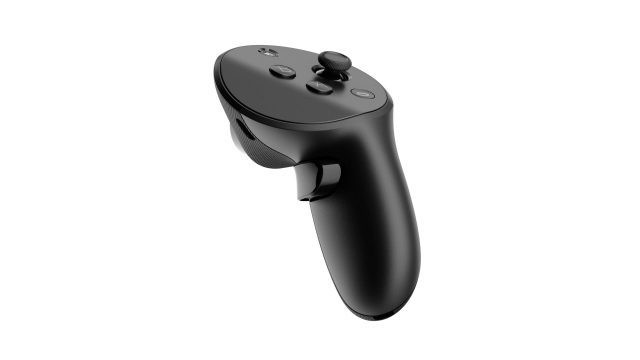
As for the attachable stylus tip which goes on the bottom of your controller… I’m not really sold. Personally I find holding the controller upside down to use as a bulbous white-board marker to be fairly unergonomic. It’s a neat idea in theory—and I love that the stylus tip is pressure sensitive for added control—but I’m not sure the headset yet has the precision needed to really pull this off.
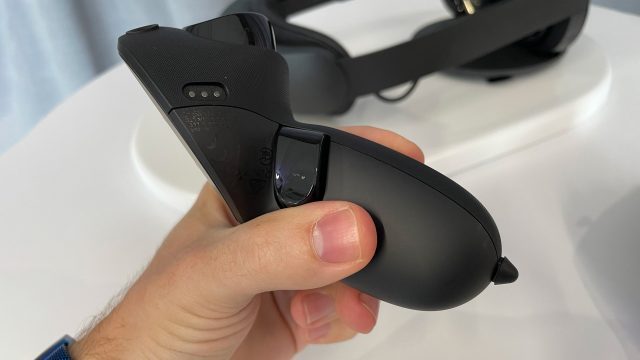
In the demos I saw that used the controller as a stylus, in both cases the virtual surface I was expected to draw on had drifted just far enough away from the physical surface it was supposed to represent that my stylus didn’t think it was close enough to start creating a mark… even though I was physically touching the controller to the physical surface.
That might be an implementation issue… after all, the pressure-sensitive tip should be able to clearly inform the system of when you are making contact and when you aren’t… but even so, once I recalibrated the surfaces and tried to draw again, I saw the surface drift fairly quickly (not by much, but even a centimeter of mismatch makes using a stylus feel weird). This might work fine for coarse annotations, like a shape here, or a few words there, but it’s far from something like a Wacom tablet.
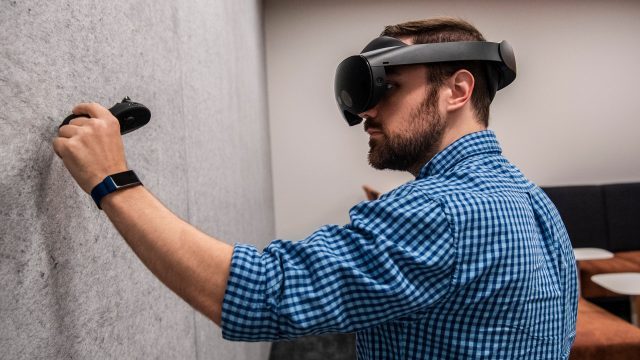
As for the haptics… in my short time with them it seemed like there’s multiple haptic engines inside, making the controller capable of a broader range of haptic effects, but there wasn’t a moment where I felt particularly wowed by what I was feeling compared to what I’ve felt on Quest 2.
Granted, haptics are often one of the most underutilized forms of XR output, and often the last to be considered by developers given the difficultly of authoring haptic effects and the peculiarities of different haptic engines in different controllers. I hope this is something that will become a more obvious upgrade in the future as developers have more time to play with the system and find where to best employ its capabilities.
One last thing about the Touch Pro controllers… they’re also compatible with Quest 2 (unfortunately not Quest 1). Not only does this reduce the potential for fragmentation between different controller capabilities, but it means some of the new goodness of Quest Pro can come to Quest 2 users who don’t want to drop $1,500 on the complete package.

I definitely give credit to Meta here as a pro-customer move. Now if they really want my praise… it would be amazing if they made Touch Pro controllers compatible with any headset. In theory—because the controllers track their own position and don’t rely on unique LED patterns, or headset-based CV processing, etc—they should be able to simply report their own position to a host system which can integrate the information as needed. It’s a stretch, but it would be really great if Meta would offer all the great capabilities of the Touch Pro controllers to any headset out there that wanted to implement them, thus creating a larger ecosystem of users with matching controller capabilities.
Comfort
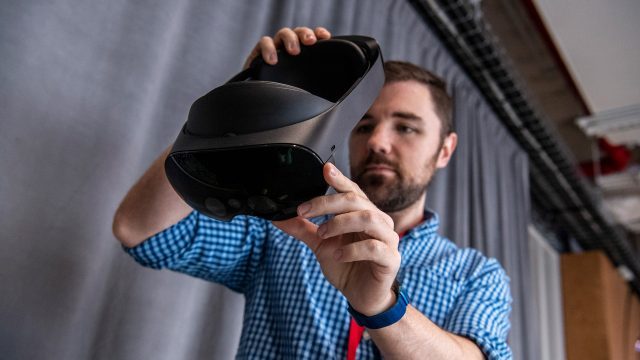
Quest Pro is no doubt more compact and balanced than any headset Meta has made previously, but it’s also heavier at 722 grams to Quest 2’s 503 grams.
Granted, this is another instance where Meta’s decision to put a cheap strap on Quest 2 comes back to bite them. Despite not being able to say that Quest Pro is lighter, it might in fact be the more comfortable headset.
While ergonomics are really hard to get a grasp on without hours inside the headset, what’s clear immediately is that Quest Pro is more adjustable which is great. The headset has both a continuous IPD adjustment (supporting 55–75mm) and a continuous eye-relief adjustment. Not to mention that the on-board eye-tracking will tell you when you’ve got the lenses into the ideal position for your eyes. Ultimately this means more people will be able to dial into the best position for both visuals and comfort, and that’s always a good thing.
But, it has to be said, I have an issue with ‘halo’ headstraps generally. The forehead pad has a specific curve to it and thus wants to sit on your forehead in the spot that best matches that curve… but we all have somewhat different foreheads, which means that specific spot will be different from user to user. With no way to adjust the lenses up and down… you might have to pick between the ‘best looking’ and ‘most comfortable’ position for the headset.
I’ll have spend more time with Quest Pro to know how much this problem exists with the headset. And while I’d love to see other headstrap options as accessories, a halo-style headstrap might be a necessity for Quest Pro considering how much of the face the headset is attempting to track with internal cameras.

